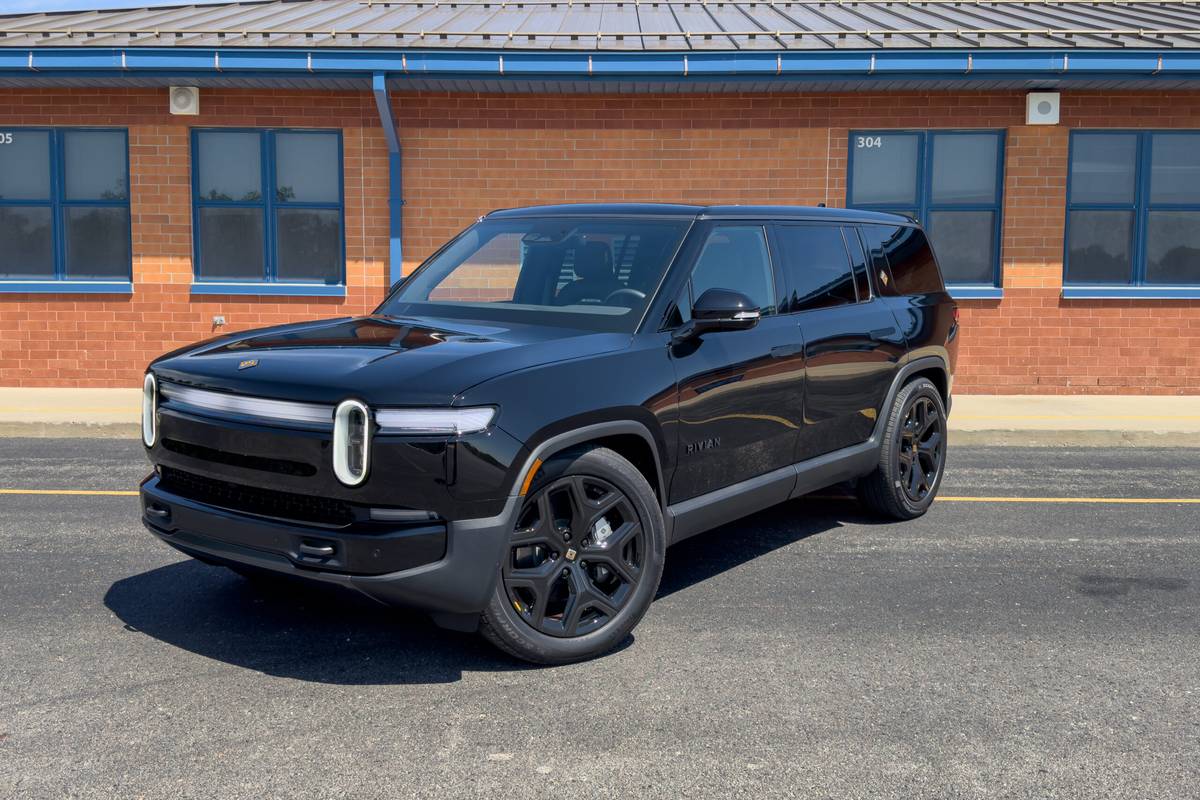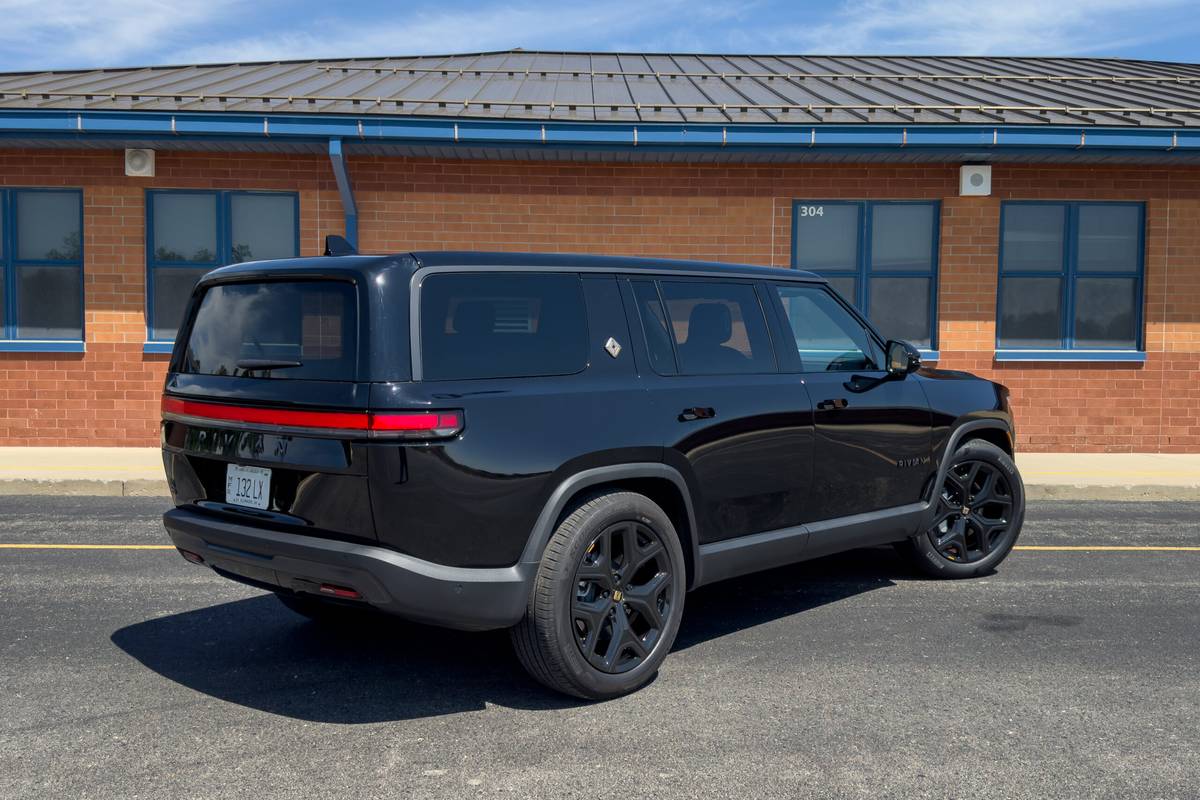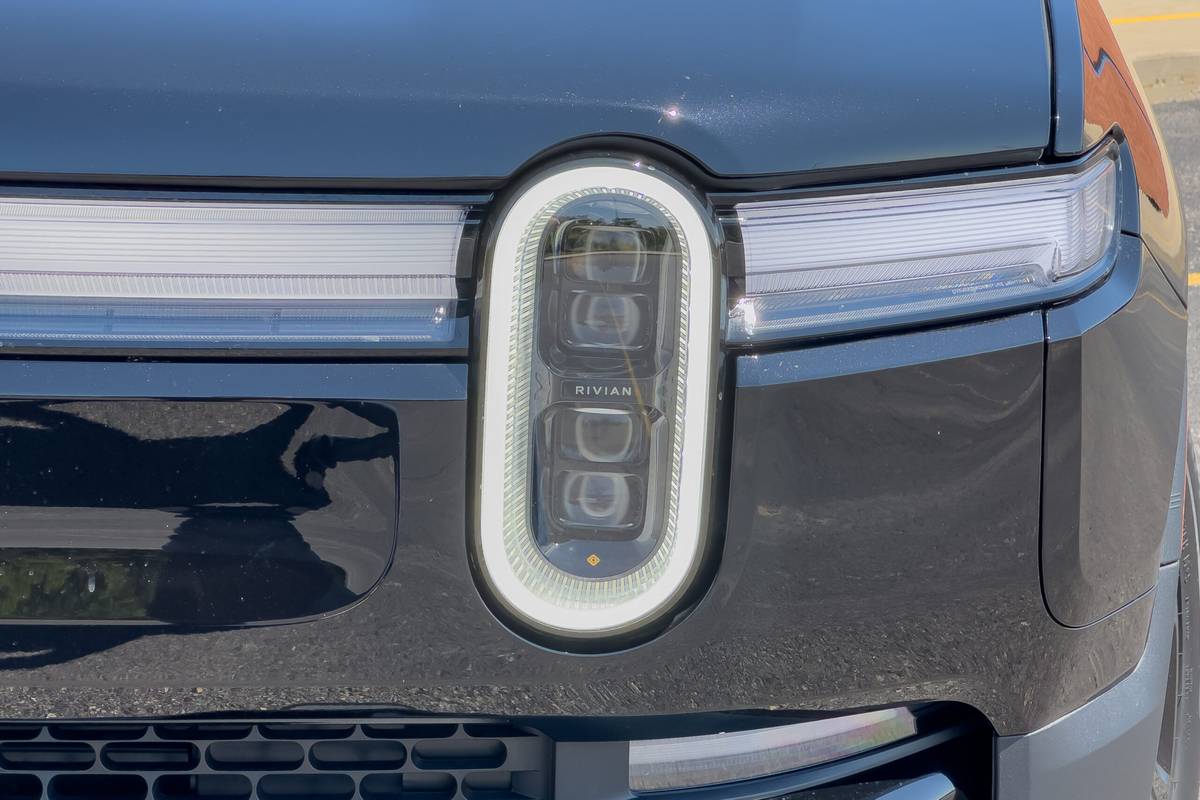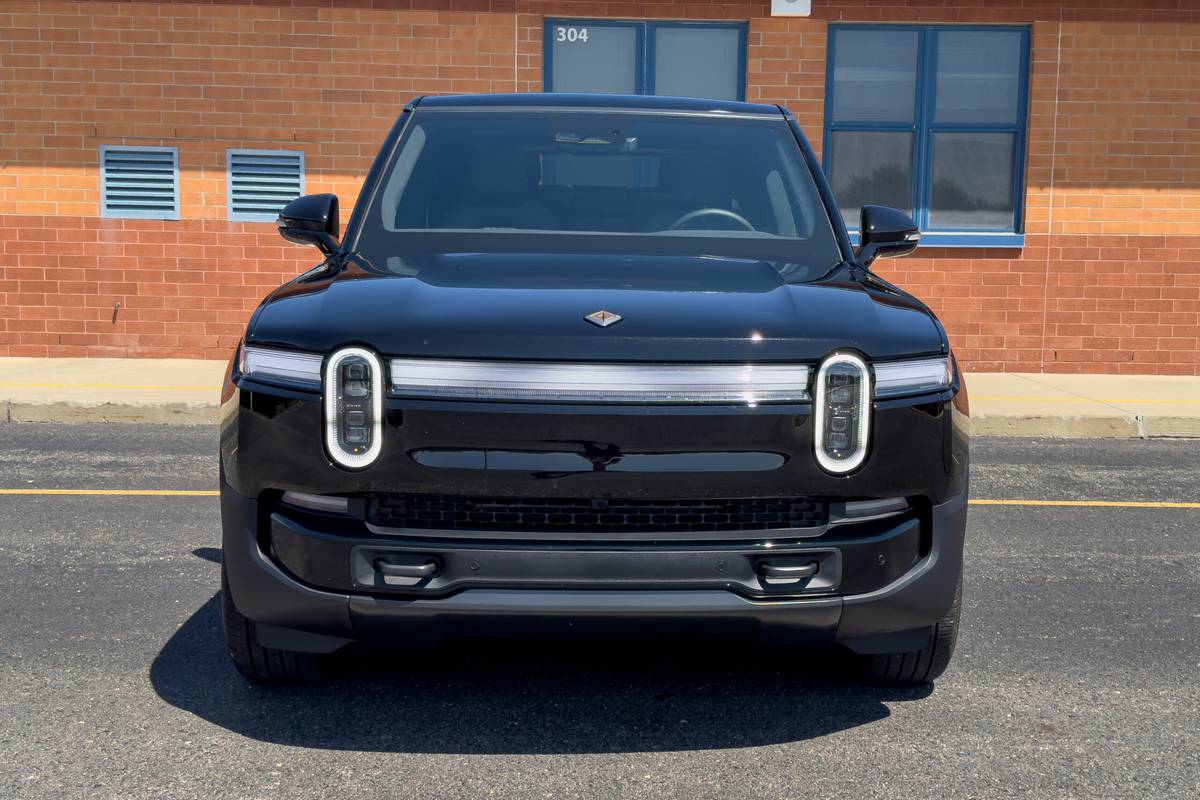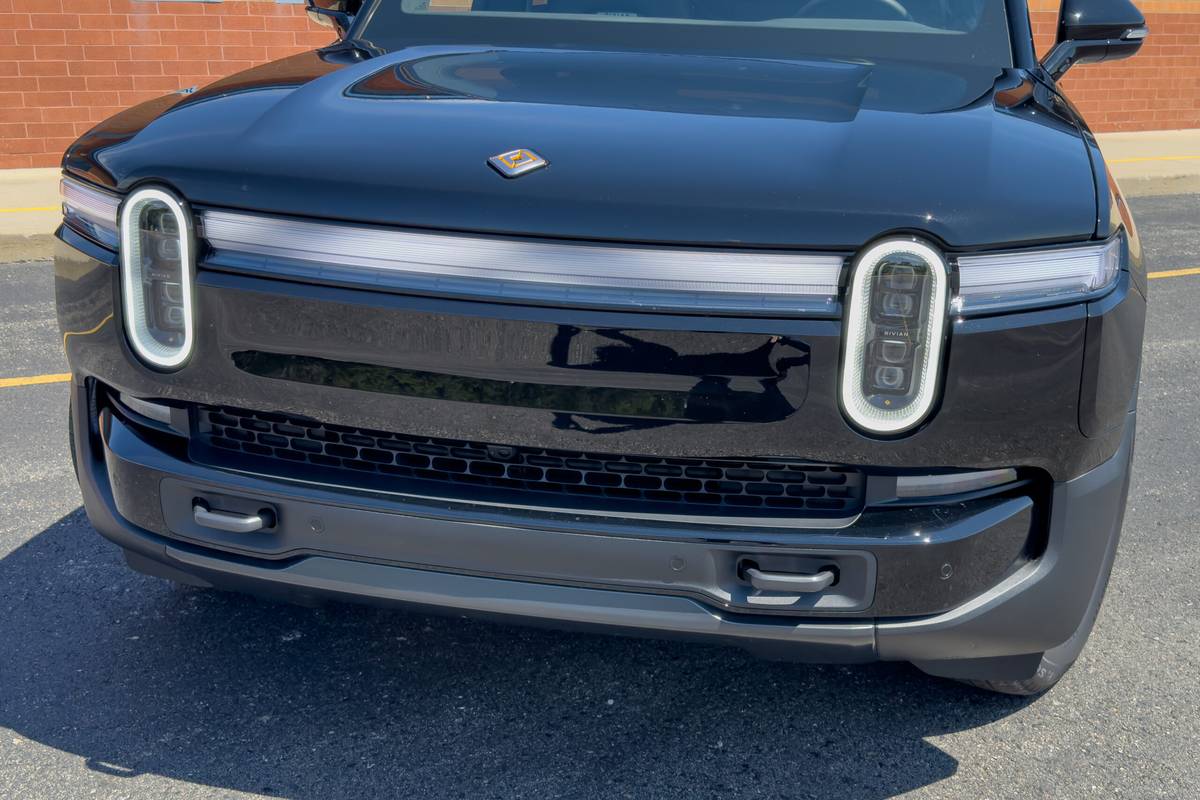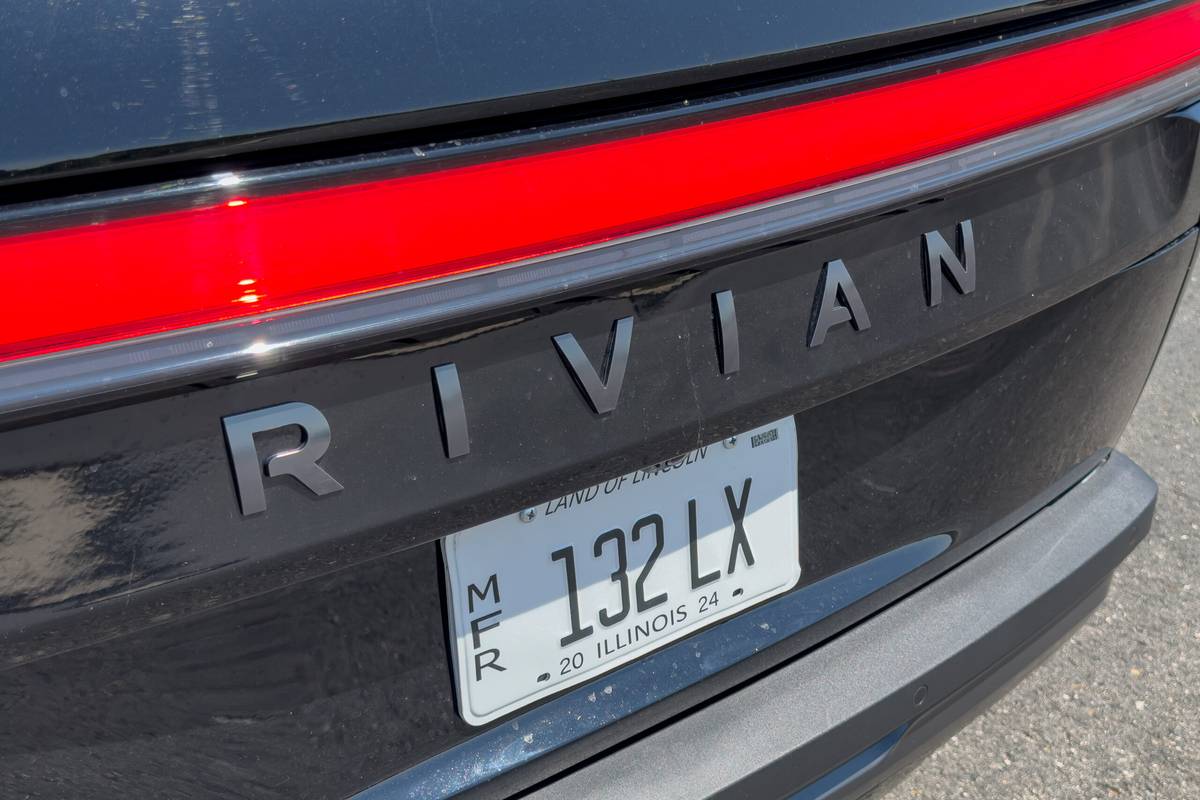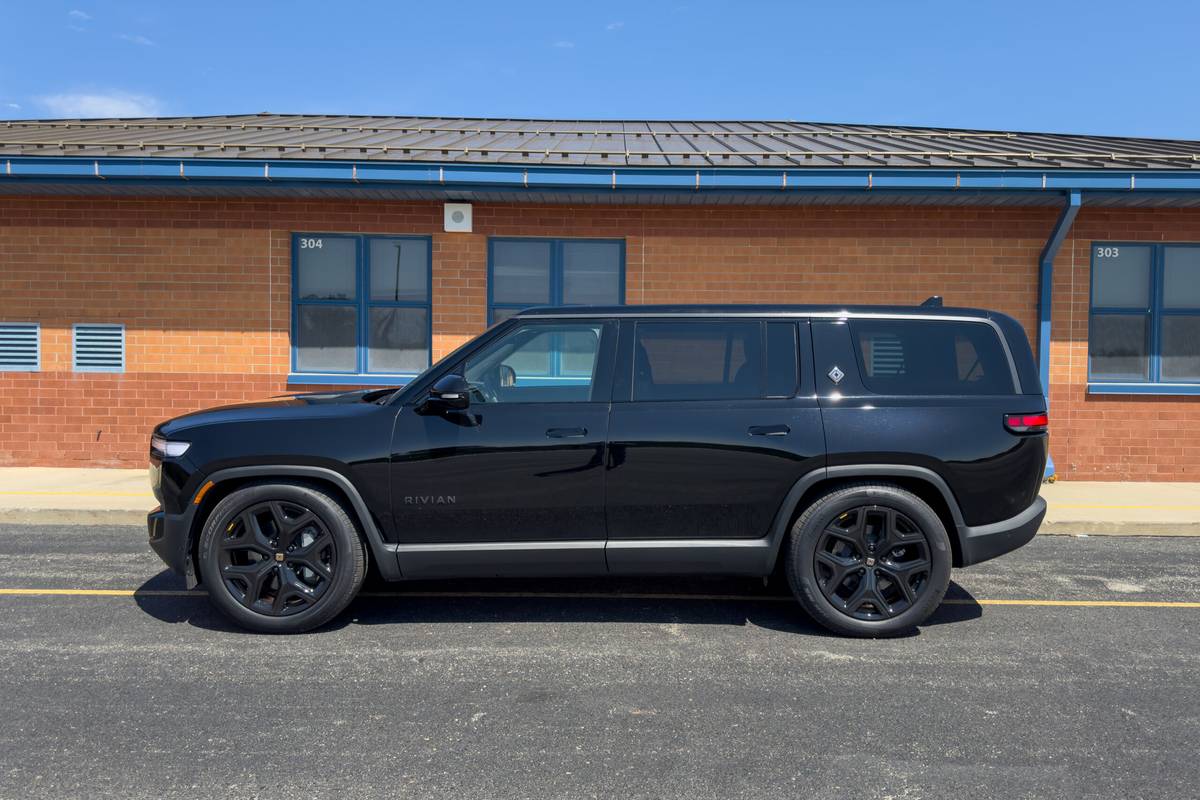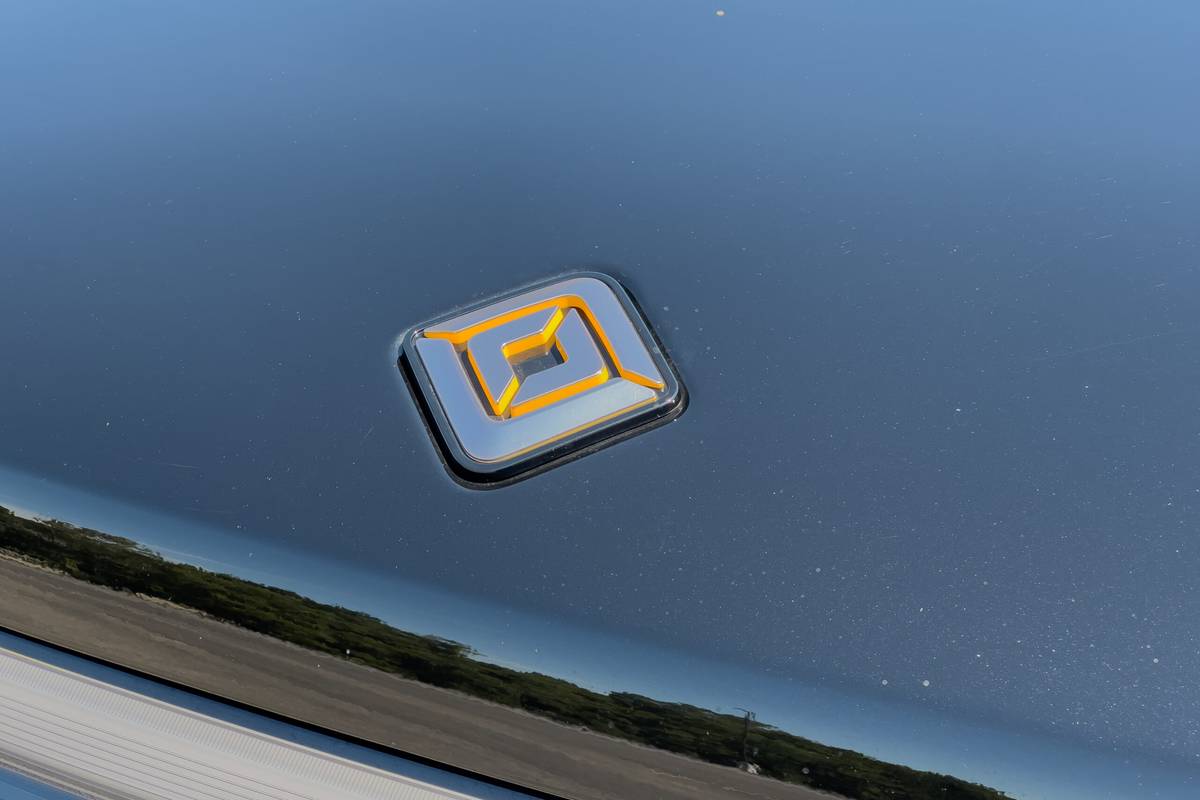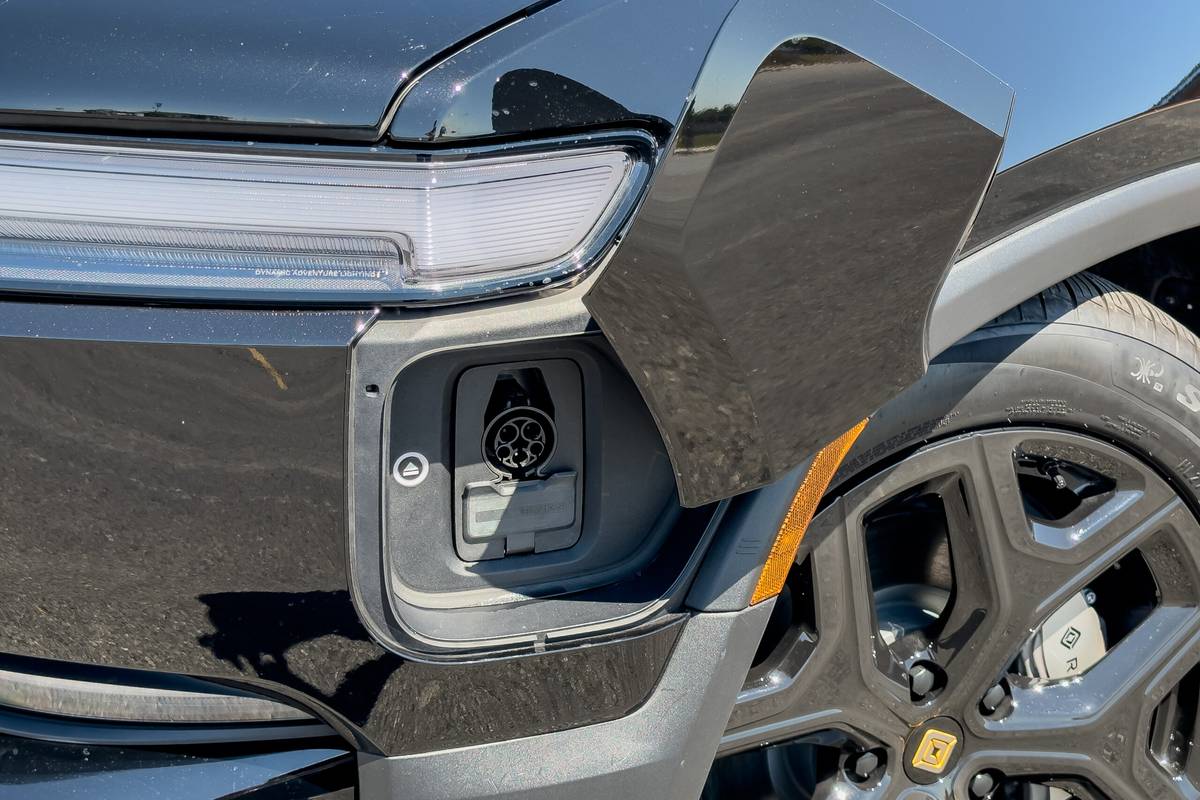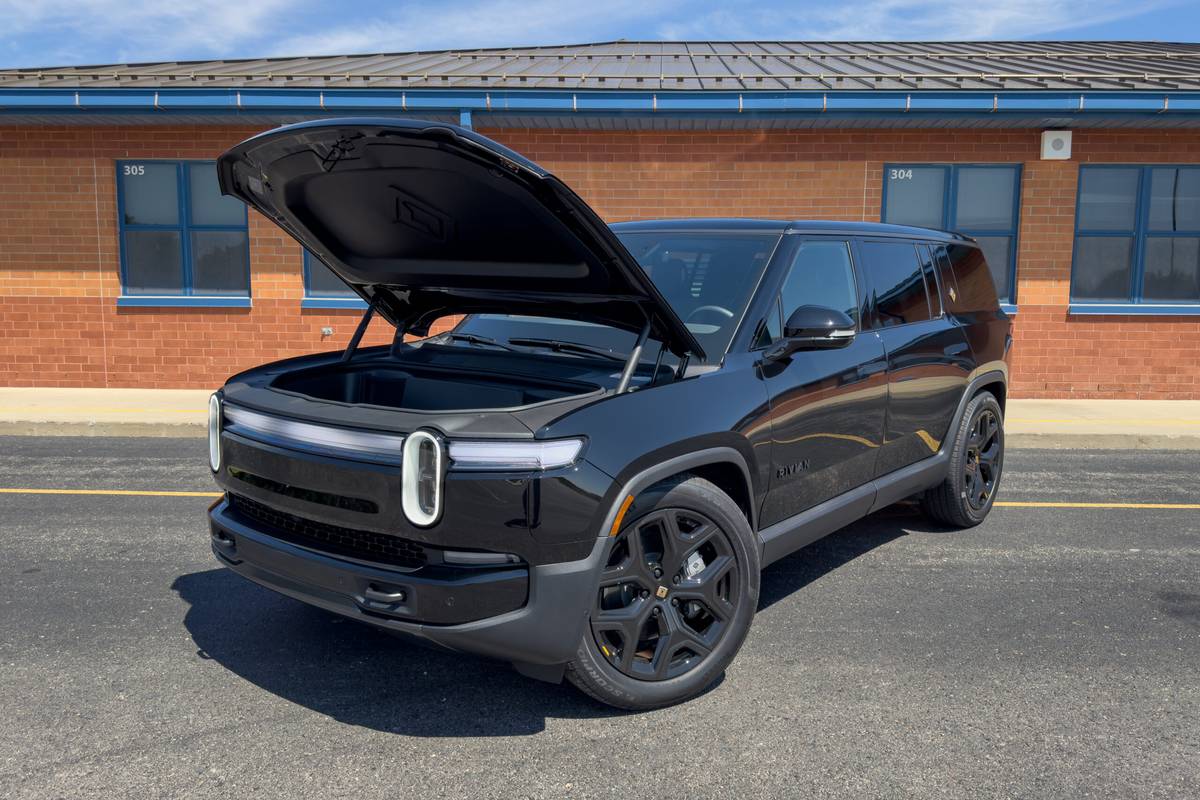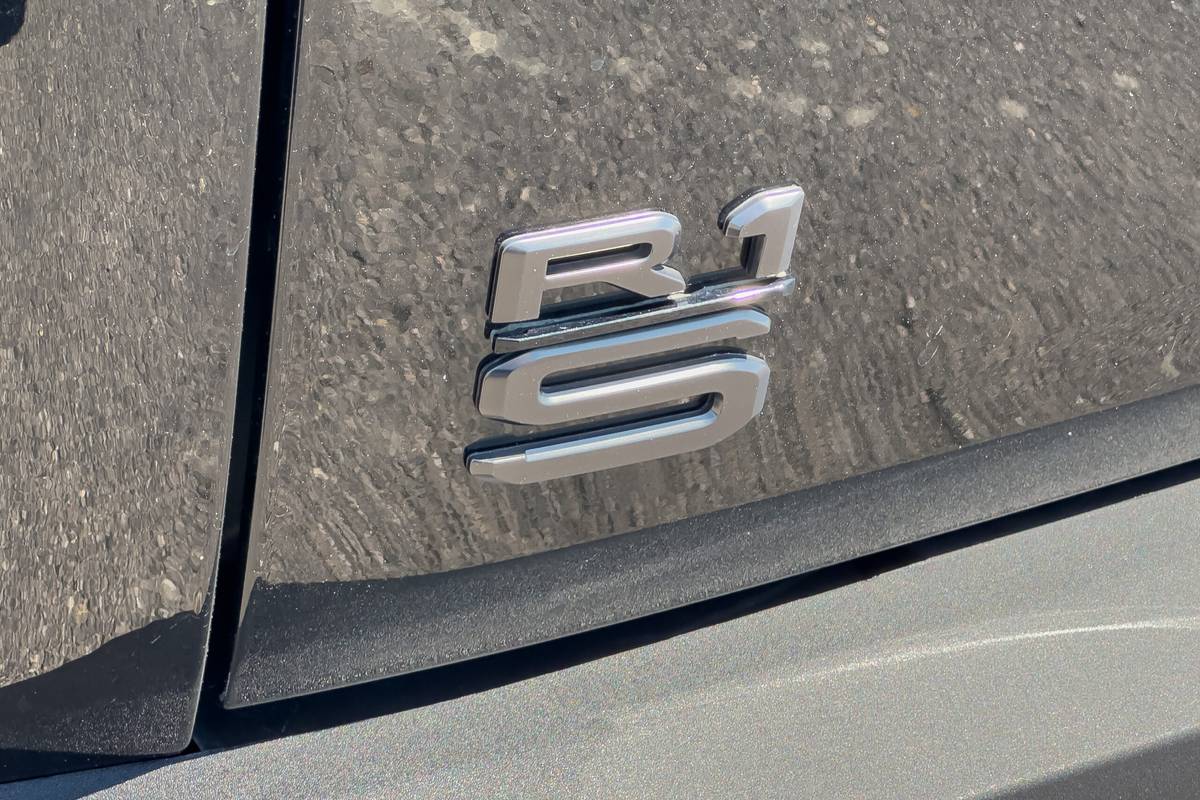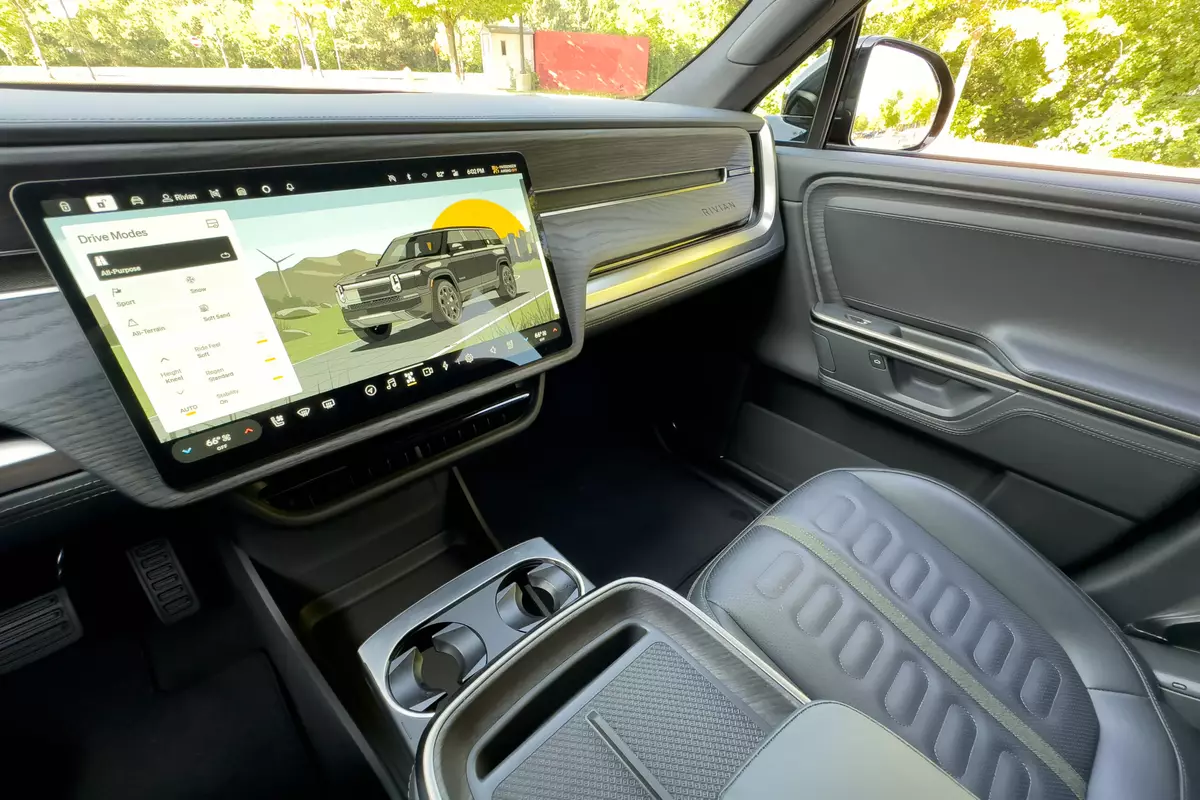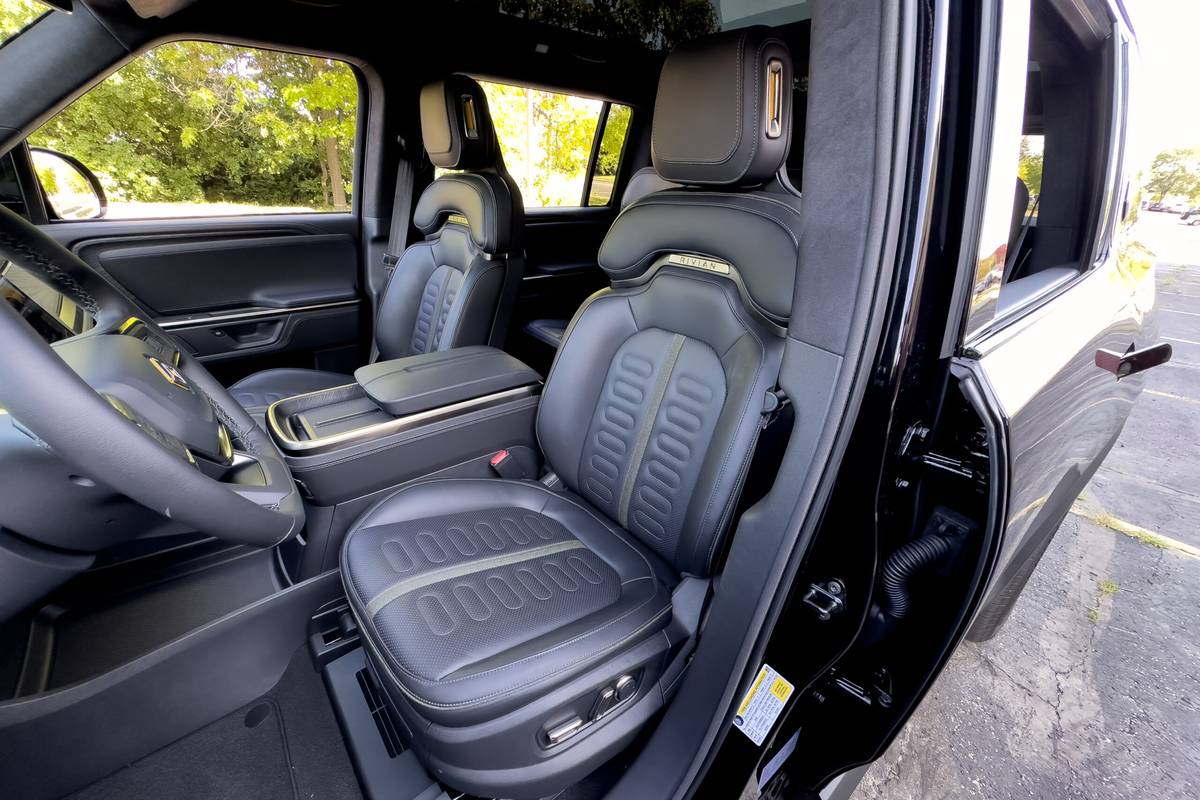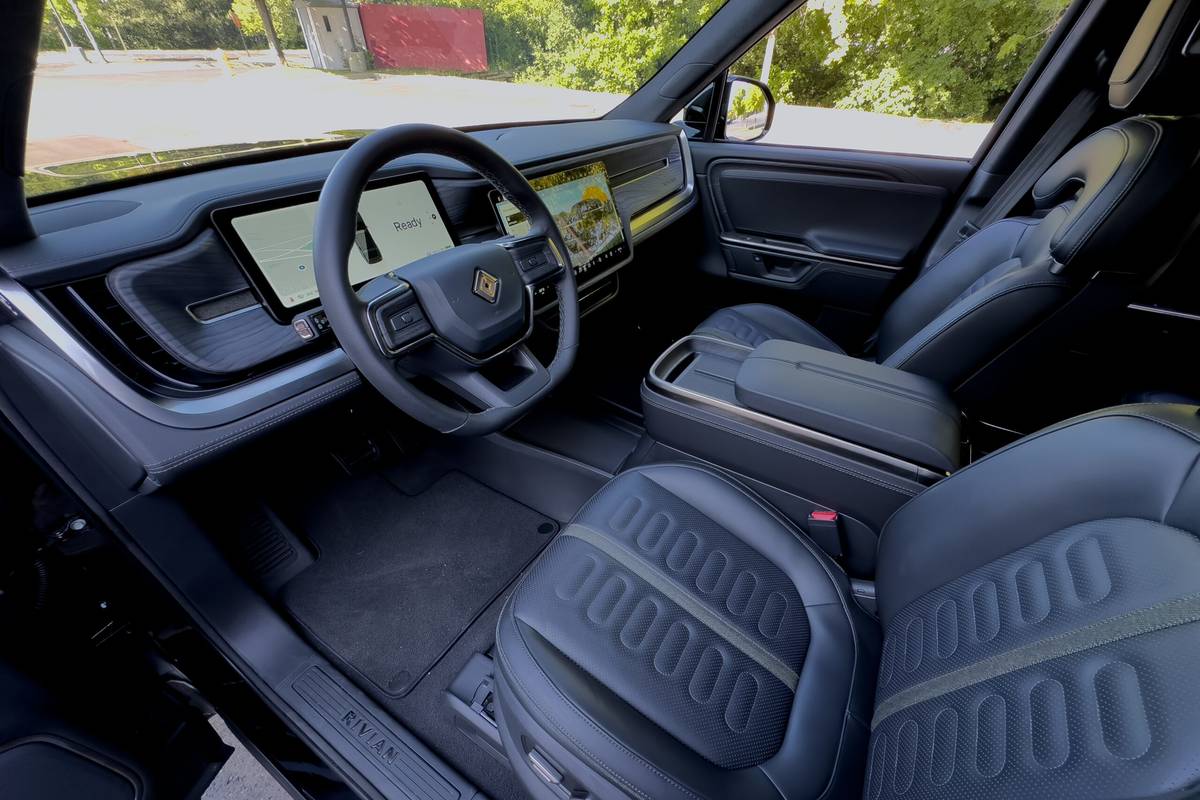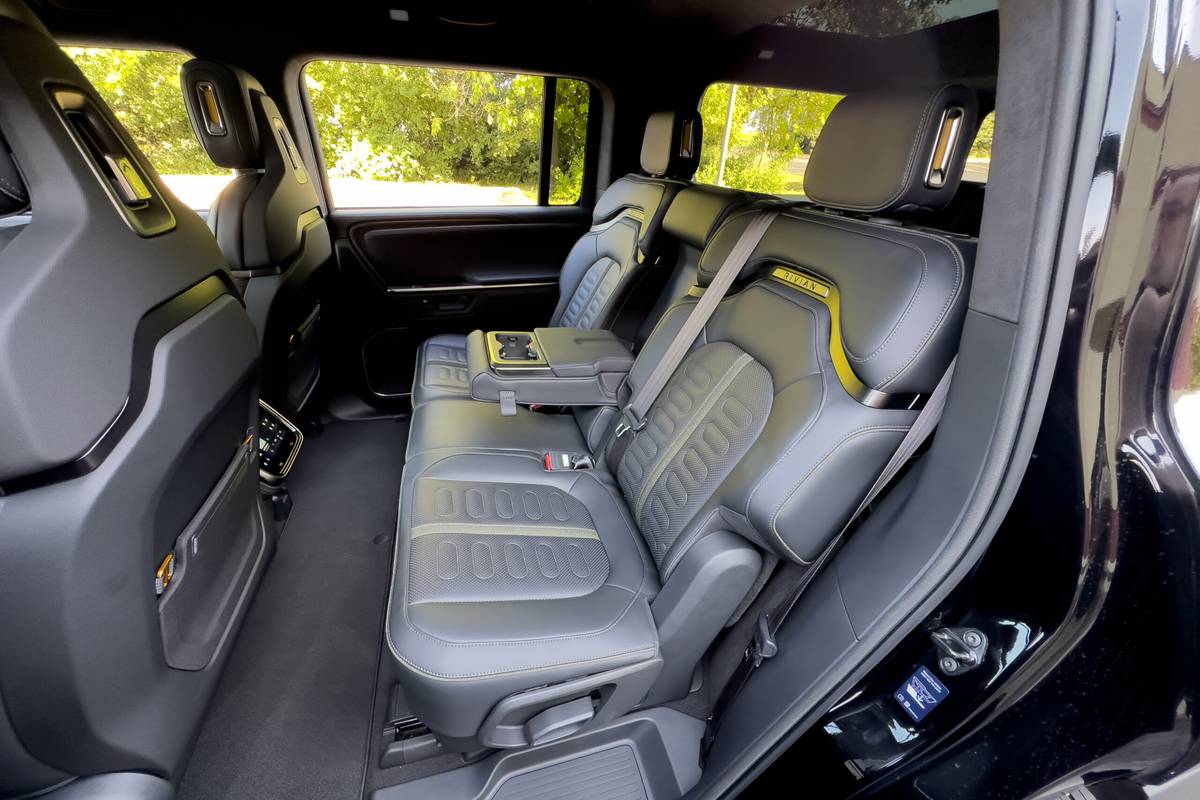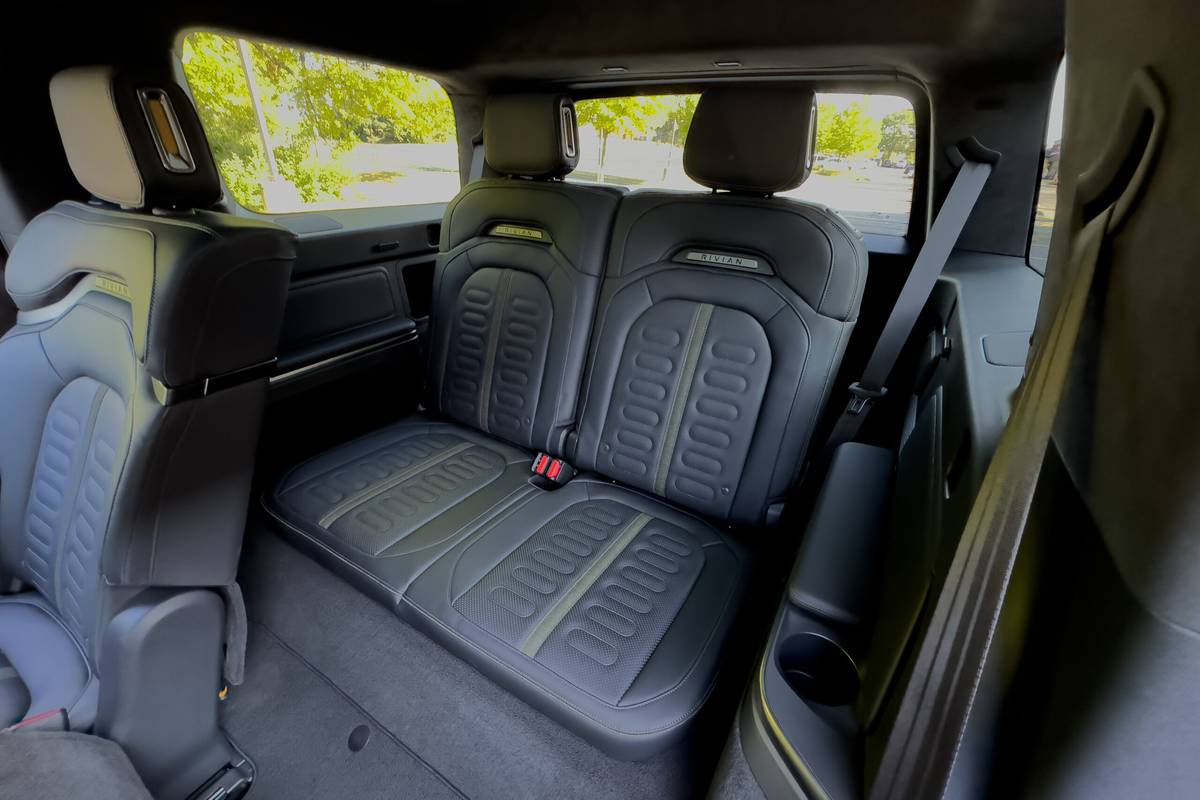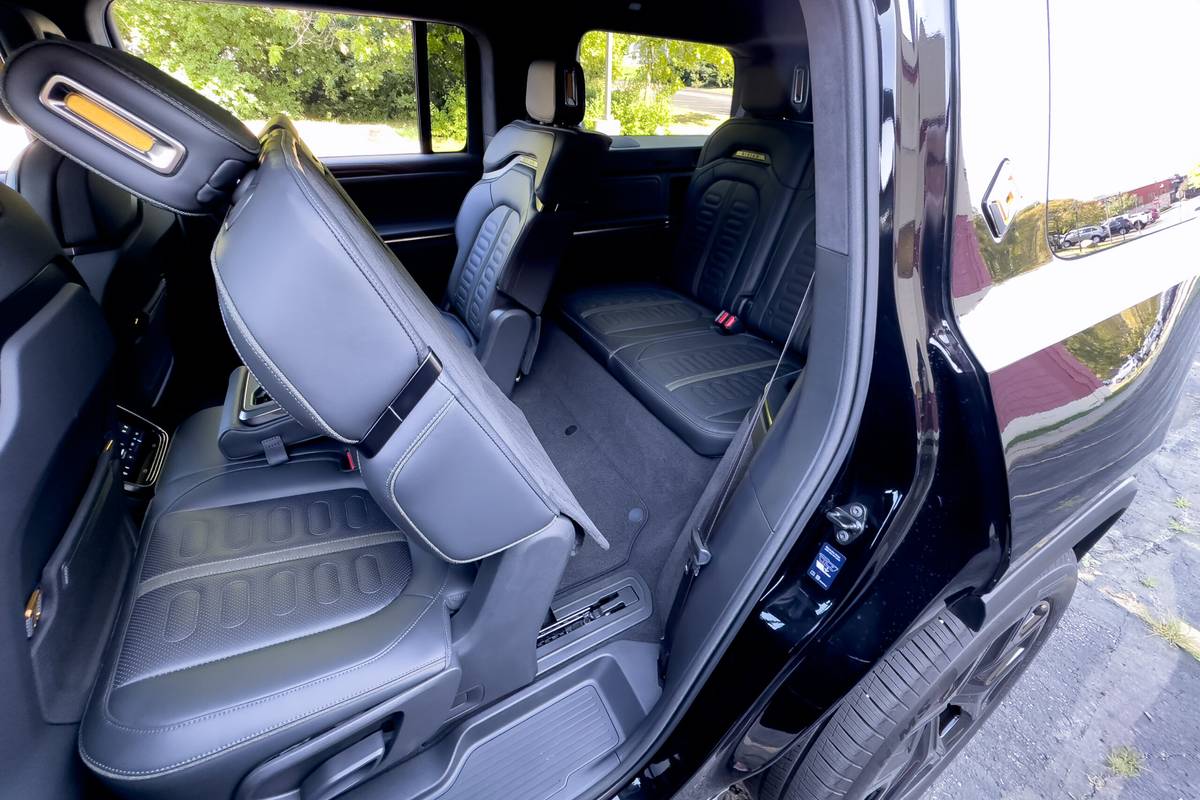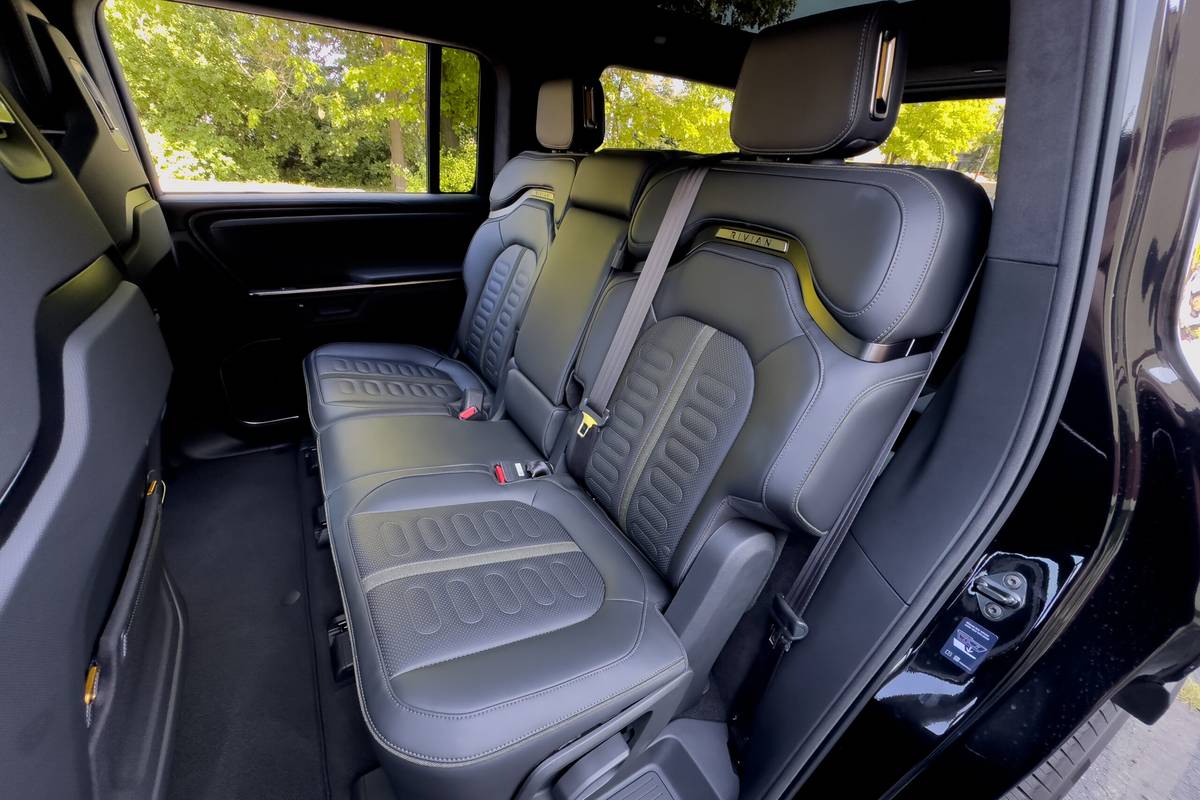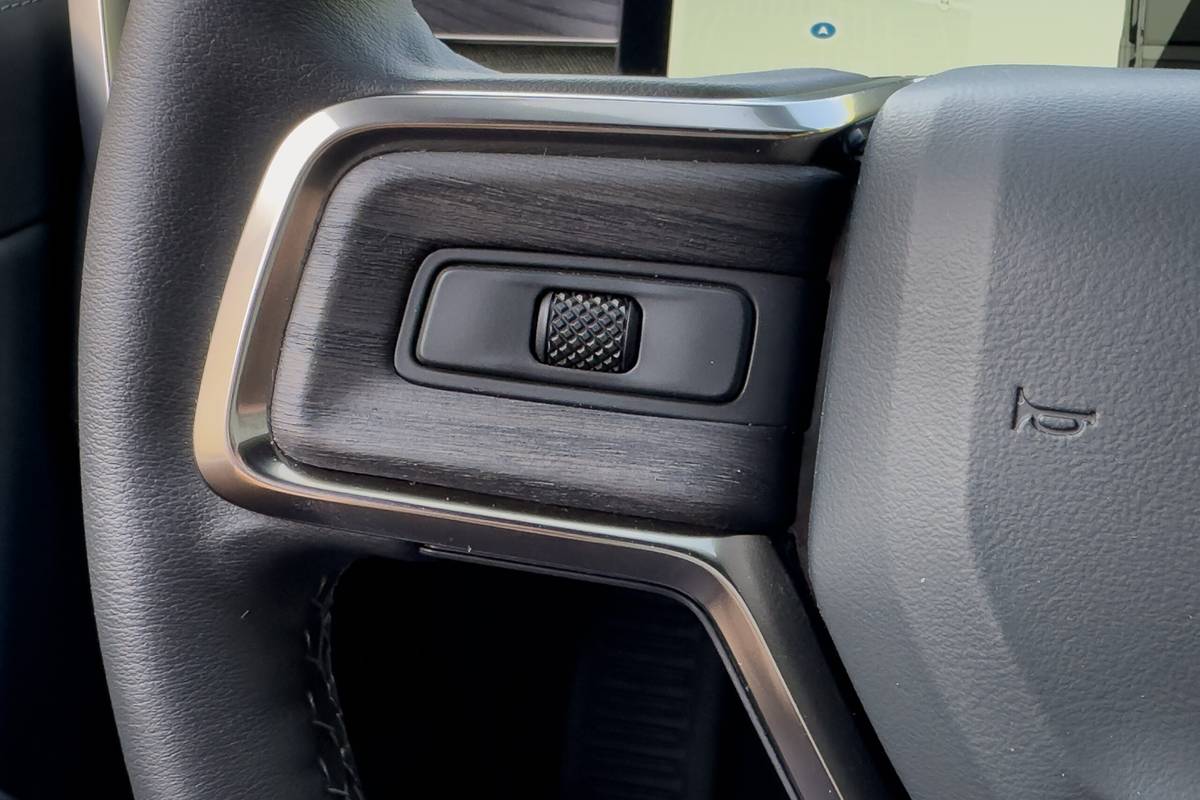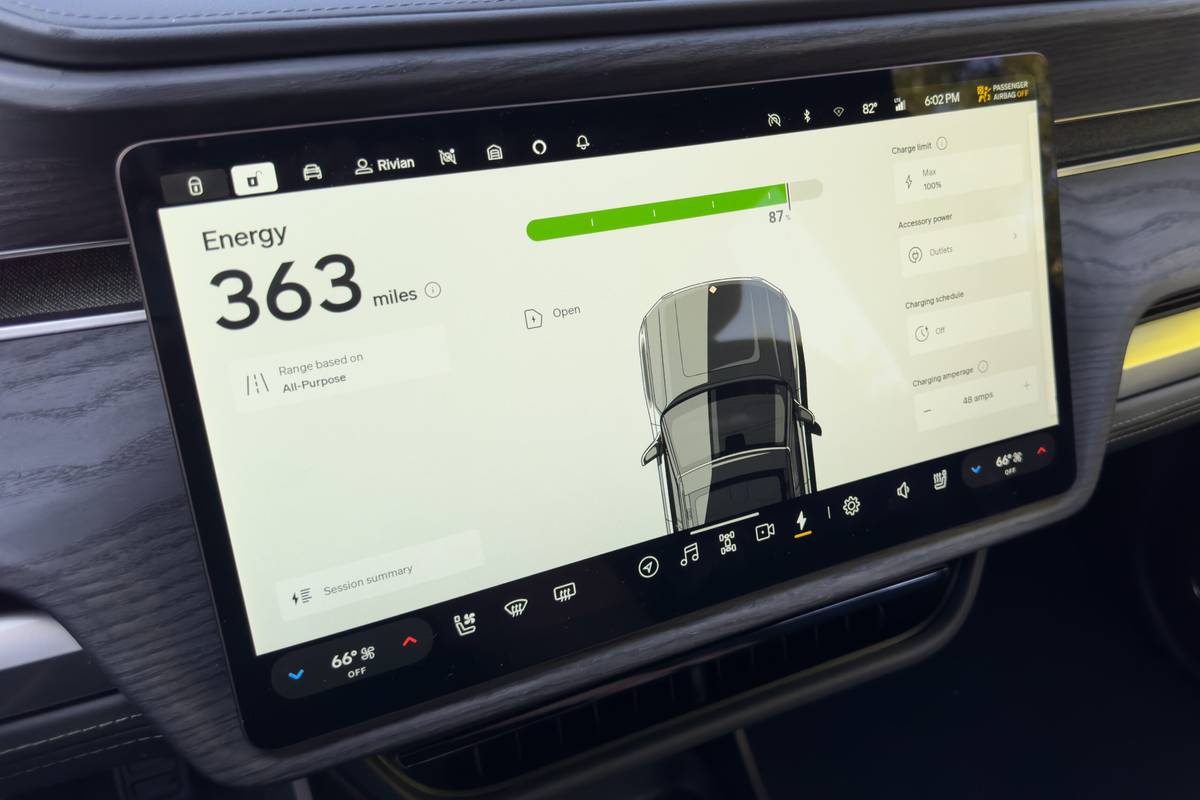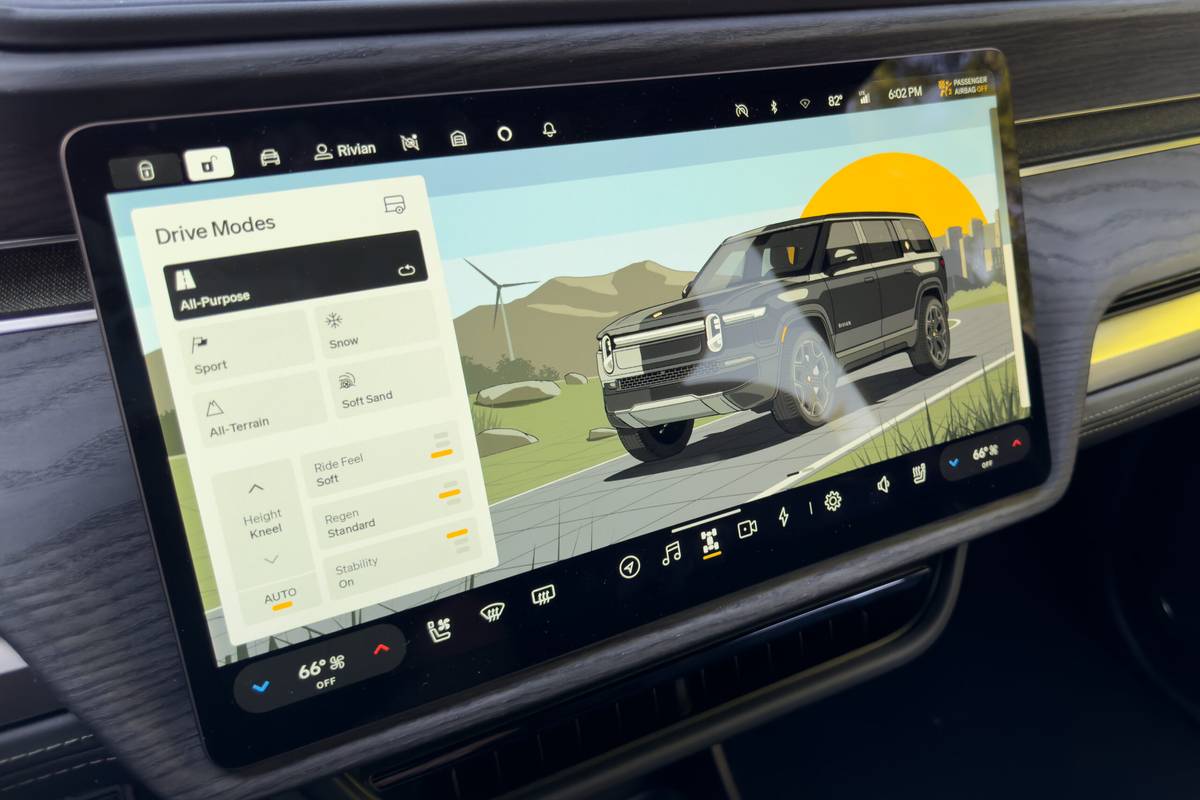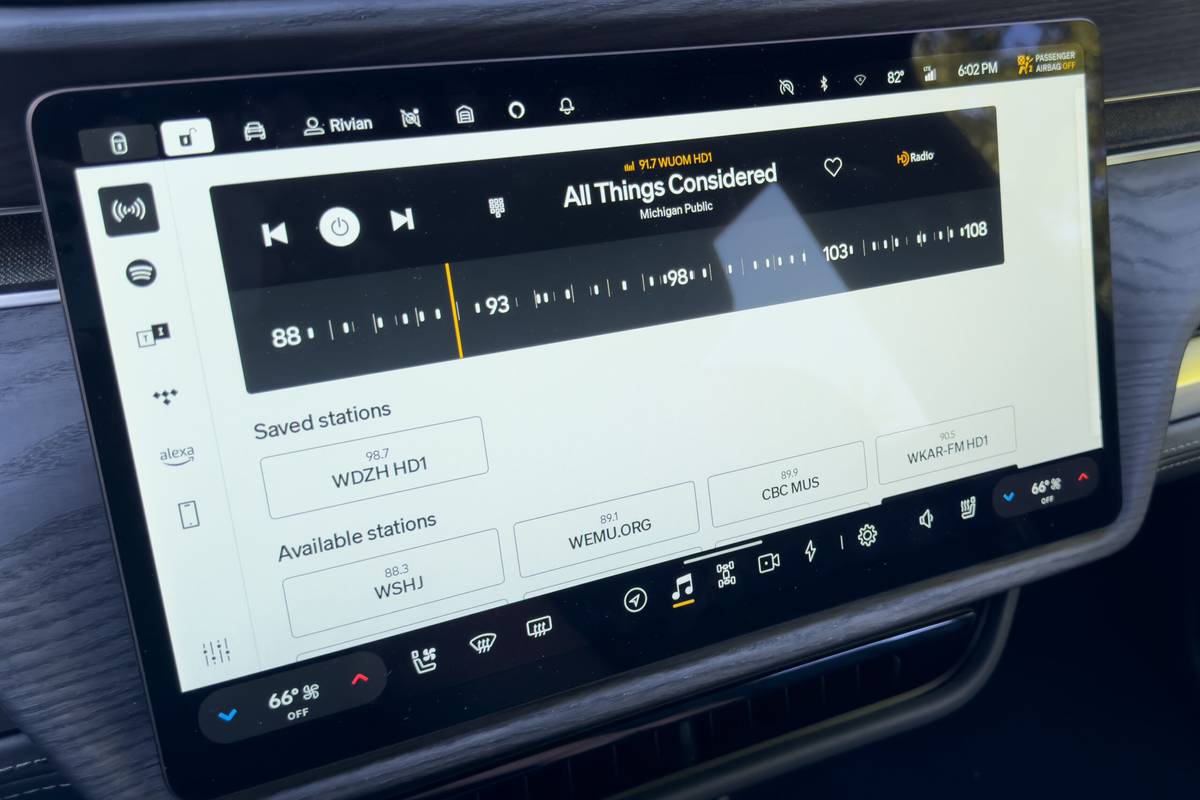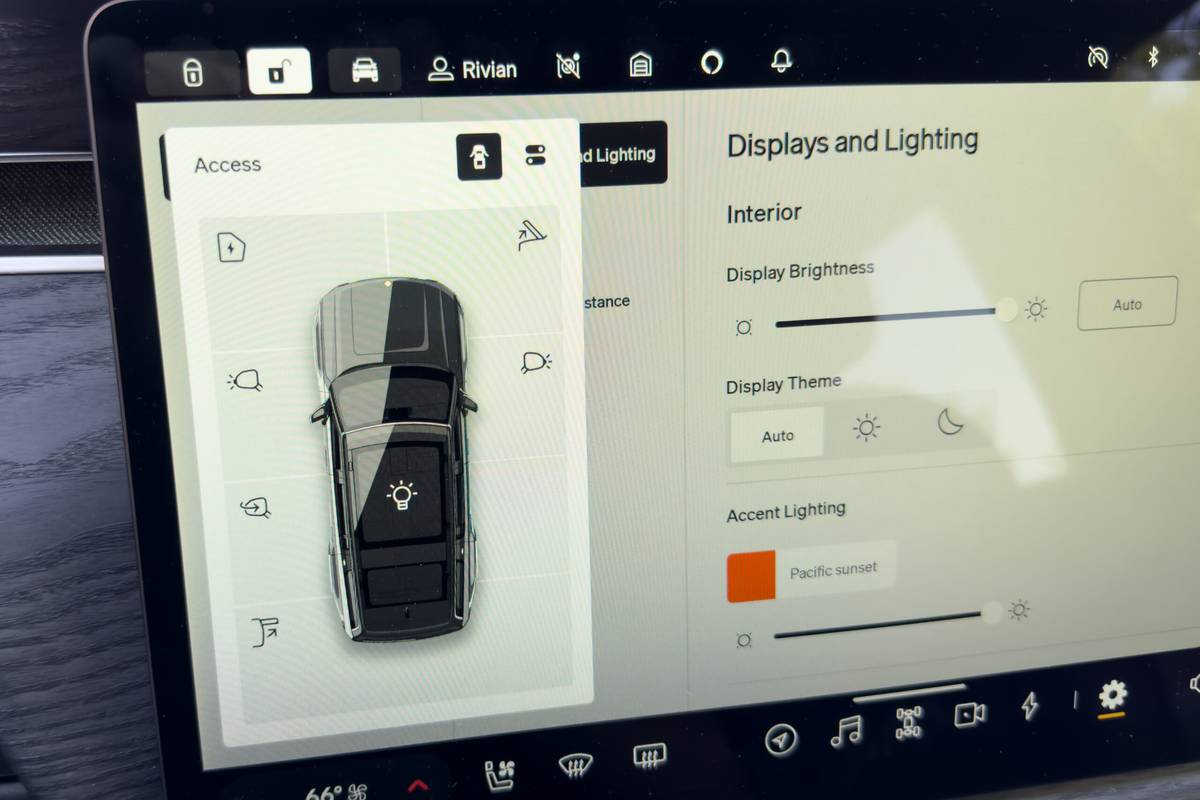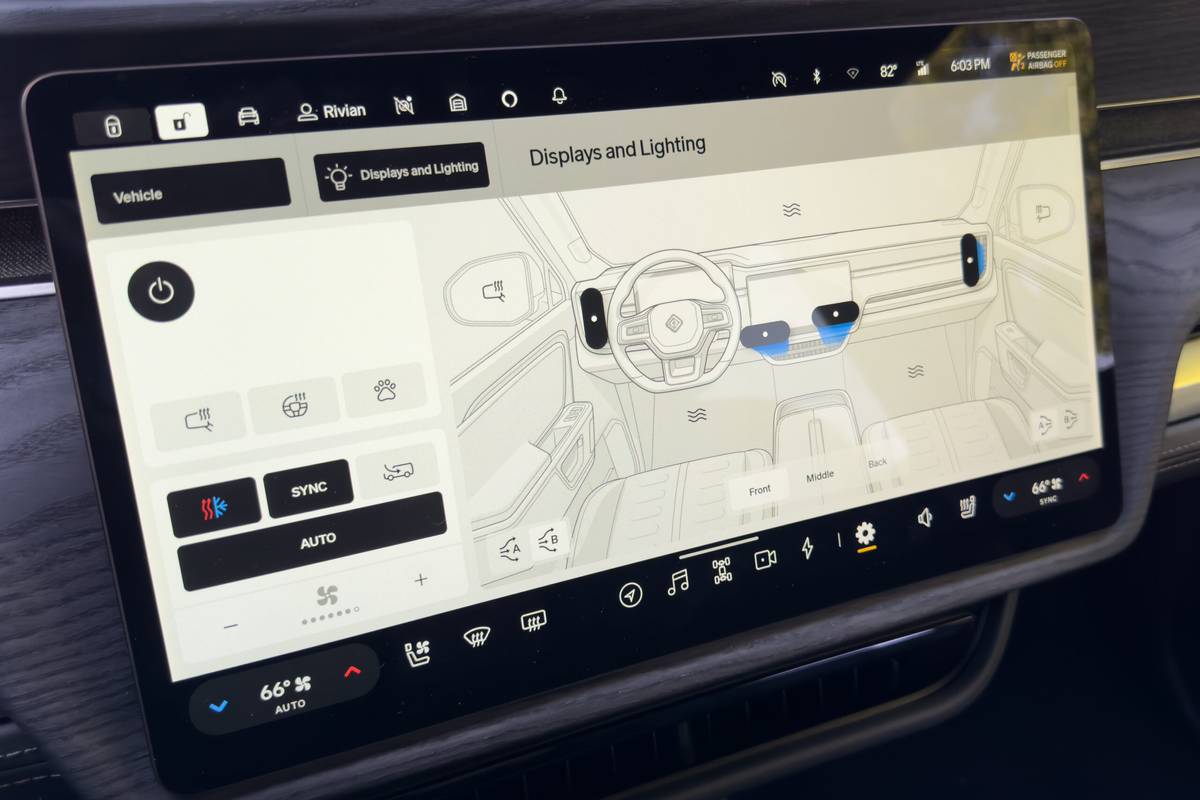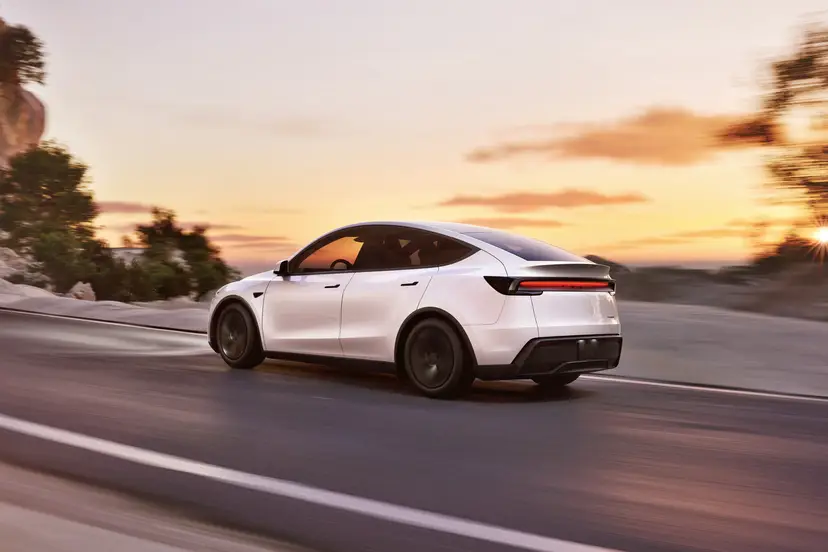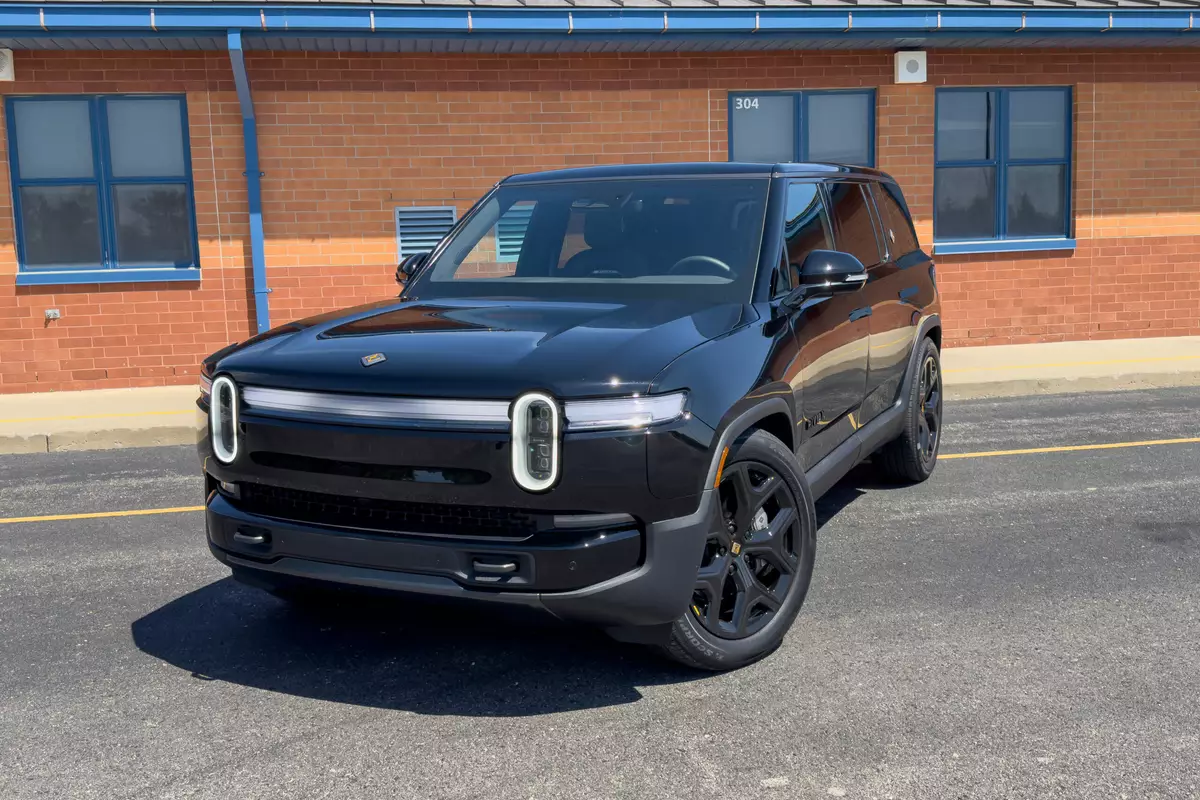
The verdict: The R1S sees many changes for 2025, but they’re all things you don’t see, leaving the rest of Rivian’s outstanding three-row electric SUV just as good as before.
Versus the competition: If normalcy and genuine luxury are high on your list of priorities, the Rivian R1S runs away from the oddly styled, less nice and equally pricey offerings from Tesla, Mercedes-Benz, BMW and GMC.
So you’re looking at this sleek, murdered-out 2025 Rivian R1S — a model the company calls second-generation — and thinking … well, that doesn’t look any different from the 2024 model. And no, it really doesn’t. Like, at all — aside from some new wheel designs and a couple of new color options inside and out.
Why, then, does Rivian call it second-gen, especially considering the first-generation SUV debuted as a 2022 model? Car companies don’t typically go through generation changes that fast; most generations are eight-year cycles, with major refreshes happening at the four-year mark and mild updates happening every two model years, on average. Well, Rivian admits that the ‘25 R1S doesn’t look any different from the ‘24, but it insists enough has been done to the unseen bits and pieces of the automaker’s flagship SUV to justify calling it such a significant update. And given the laundry list of components that are new to the R1S for ‘25, I agree — but one big question remains: Do any of these changes affect the way this electric SUV drives? We spent a week with a new R1S to find out.
Related: 2025 Rivian R1S and R1T Look Unchanged, Thoroughly Redesigned Under the Skin
What’s Changed?
Not the sheet metal; that much is obvious. The look of the R1S is only mildly different, centered around the elimination of the foglights up front and the addition of new adaptive LED headlights that can adjust their output based on oncoming vehicles. Almost all the other changes for 2025 are under the skin.
My test vehicle was a 2025 Dual Max Performance version, meaning it has one motor for each axle and the biggest battery you can get in an R1S. It’s good for a claimed 665 horsepower and 829 pounds-feet of torque — monstrous numbers by any measure, yet not the top of the performance hierarchy for the R1S. A new-for-2025 tri-motor option adds yet another motor, upping output to 850 hp and 1,103 pounds-feet of torque, and the top quad-motor version brings one motor per wheel, 1,025 hp and 1,198 pounds-feet of torque. That’s one hell of a boost from the 2024 quad-motor version, which had 835 hp. The new quad-motor R1S can blast from 0-60 mph in 2.6 seconds, Rivian says. My mid-level Dual Max Performance version manages “only” an estimated 3.4-second 0-60 run, according to Rivian, which is still ungodly-quick-sports-car territory. Talking about modern EVs, however, you get used to such numbers.
The R1S’ motors themselves are new for 2025. They’re oil-cooled now, which is better for both heat management in low-speed driving and efficiency during high-speed cruising. The batteries are new, too, with better efficiency and increased range, which now runs from 258 miles in the basic dual-motor variant to 410 miles when you add the Max Pack to that twin-motor model; Rivian says its the longest range of any electric SUV on the market.
The R1S’ DC fast-charging capability has also been boosted: Rivian says it can charge from 10%-80% in just 30-41 minutes depending on the battery, ambient temperature, battery conditioning and a host of other variables. My test vehicle repeatedly predicted 410 miles of range or more, but super-hot weather during the week of my test resulted in a lot of air-conditioning use, which will sap the range of any vehicle, gasoline or electric. Still, that’s an excellent range number; the fact that Rivian is accomplishing it with less expensive batteries is even better.
A lot of other bits in the R1 series (still available as the R1T pickup and this R1S SUV) have been changed, as well, but it’s all under the skin. New network architecture has eliminated more than 1.6 miles of wiring from the truck and dropped the number of computing modules from 17 to just seven. A completely new suspension has been fitted with recalibrated air springs and dampers for ride-height control and greater adjustability, and a new hydraulic roll-control system is meant to enhance stability. A new Autonomy Platform has also been added, featuring 11 cameras, five radars, artificial-intelligence prediction technology, more powerful computers, 360-degree visibility, and more redundant sensors to improve the function of this vehicle’s safety and semi-autonomous driving systems.
What does that all mean? The new 2025 R1S is meant to deliver improved performance over the outgoing model, but at a significantly lower cost to build in hopes that Rivian can achieve operating profit that much sooner. Cheaper and easier to build, just as nice inside, better driving performance, more features — what’s not to like?
How It Works
My last long spin behind the wheel of the previous-generation R1S was in a quad-motor version with the Off-Road Package, which added thick, chunky all-terrain tires and an insane amount of power and torque. And I loved it; despite the loudness of the blocky tire treads, it was one of the most fantastic electric SUV experiences I’d had. It’s almost unimaginable that it was the first-ever SUV from a brand-new startup company — the execution, refinement and overall quality were stunning.
The new 2025 R1S I tested was an on-road-oriented version, with 22-inch wheels wrapped in street tires. A less powerful Dual Max Performance variant, it lacked the truly extraordinary numbers of the quad-motor version, but it’s still incredibly quick for what it is. It doesn’t have the immediate acceleration the more powerful models do, but you won’t mind that; the trade-off is it’s more livable around town, it’s easier to modulate the accelerator pedal for passenger comfort, and it seems tuned more for calm than for performance.
It does, however, ride rather stiffly. Those thin-sidewall tires on big 22s do not make for the kind of supple ride one experiences in a Mercedes-Benz EQS SUV. The R1S is a more athletic take on an electric SUV than the Benz, which feels more limousine-like in its tuning. Even when the suspension is set to Comfort, it’s still stiff, and switching to one of the sportier modes firms things up even more. It might be great on the smooth roads of southern California, but it’s a bit punishing on the cratered landscape of southern Michigan. The Rivian’s steering feel, however, is excellent and direct, and the meaty wheel feels good in your hands. Braking performance is solid, as well, with adjustable regenerative braking that includes one-pedal driving if you so desire.
The result of all the invisible changes for 2025 is an SUV that performs much as the previous one did — which is to say, quite well. It provides a luxurious driving experience that recalls Land Rovers and high-end BMWs, but with a more hefty feel than you’ll find in a Tesla. (It is indeed rather heavy, with a base curb weight of nearly 6,500 pounds, but that’s still lighter than it was before due to those under-the-skin changes.) It’s dynamically excellent, just as it was before. It’s not one of those vehicles that will leave you asking why it costs what it does; the experience of driving the new R1S is exemplary.
Minor Interior Updates
The interior will look familiar to anyone who already has an R1S, as the design hasn’t really changed at all. What’s new is an updated user interface for Rivian’s proprietary multimedia and control systems. As before, everything is controlled through the system’s touchscreen interface, including mundane functions like adjustments for the side mirrors, steering wheel and vents — which we hate. Hate’s a strong word, but it’s the right one here. Like Tesla and an increasing number of other automakers, Rivian’s buried what should be a quick, easy, one-touch affair deep inside screens and menus. The idea is to set all these things to your personal preference, then tie their position to a memory function in your driver profile. That’s fine, but doing things like adjusting the air vents while you drive should not be such a challenging process.
The rest of the new UI is just as big, easy and intuitive as the prior version. The screen is massive and incredibly clear, with high-resolution graphics running on an Unreal Engine graphics controller, which is used in many video games. Things happen quickly when the screen is touched, but like all touchscreens, you sometimes need to touch it two or three times to get what you want. And given the huge amount of real estate the screen provides, it’s a bummer that there’s no “home” screen with multiple cards leading to various functions. Instead, you’re always on one function or another (navigation, climate control, audio, etc). There’s also no Apple CarPlay or Android Auto connectivity, so Rivian’s native system is all ya got, though a new subscription service for Rivian Connect+ will add Google Cast, bringing access to more than 3,000 apps, Apple Music and Dolby Atmos functions. Other electronic systems get an upgrade, too, including the new Rivian Autonomy Platform+ system, which is centered around semi-autonomous (but not hands-free) cruise-control functions.
The 2025 R1S’ interior is just as spacious, comfortable and well put together as the prior version. The assembly and materials quality are excellent, and the patterns and designs are thoroughly modern, yet still classy. Unlike some other SUVs it competes with (including the GMC Hummer EV SUV and Mercedes-Benz EQS SUV), the Rivian feels like a luxury vehicle. Those rivals have interesting interiors, but they cheap out on the tactile quality of their panels, consoles and controls. The Rivian’s front seats are supportive, featuring very nice materials, and the second row has acceptable legroom. The third row is … there; it’s really best for children or emergency use only, as it’s cramped and not all that easy to get into. Put those seats down, though, and the R1S has plenty of space for hauling gear. It also has an excellent 7,700-pound towing capacity, which is easily enough for a good-sized camper or boat. Towing with an electric vehicle can significantly reduce your driving range, however, as we learned when testing the Ford F-150 Lightning electric pickup.
Pricey, but Competitive
The new R1S starts at $77,700 for a dual-motor version with the standard battery pack (all prices include an $1,800 destination fee), topping out for now at $107,700 for a Tri Max. (As of publication, Rivian was accepting refundable $3,000 deposits for the R1S Quad Max, which is scheduled to arrive in 2025 but has not yet been assigned a price). My test vehicle rang in at $101,150, but that included the big battery (a $14,000 option!), a “Darkout” black trim package, premium audio and extra-cost paint. That’s pretty much spot on with competitors like the Hummer EV SUV and the EQS SUV, and it’s less than the upcoming Cadillac Escalade IQ.
Is it pricey? Absolutely, but it’s not one of those vehicles you’re going to sit in and question the price; it feels like a premium product. It has the refinement, technology, efficiency, versatility and comfort to put it at the top of the pack of big, expensive electric SUVs — and the rarity to still turn heads on the street. It’s an excellent choice for drivers looking to upgrade from a Tesla Model Y or Hyundai Ioniq 5, who are ready for a more expensive electric SUV. The updates to the 2025 R1 series only make a good thing better.
More From Cars.com:
- Is the 2024 Rivian R1S Worth Almost $30,000 More Than Our 2024 Kia EV9?
- How Do Car Seats Fit in a 2024 Rivian R1S?
- 2024 Rivian R1T Gets Updated Rating, Named IIHS Top Safety Pick+
- 2024 Rivian R1T: Unexpected Utility
- It’s a Great Time to Shop for an Electric Vehicle: Report
Related Video:
We cannot generate a video preview.
Cars.com’s Editorial department is your source for automotive news and reviews. In line with Cars.com’s long-standing ethics policy, editors and reviewers don’t accept gifts or free trips from automakers. The Editorial department is independent of Cars.com’s advertising, sales and sponsored content departments.




























